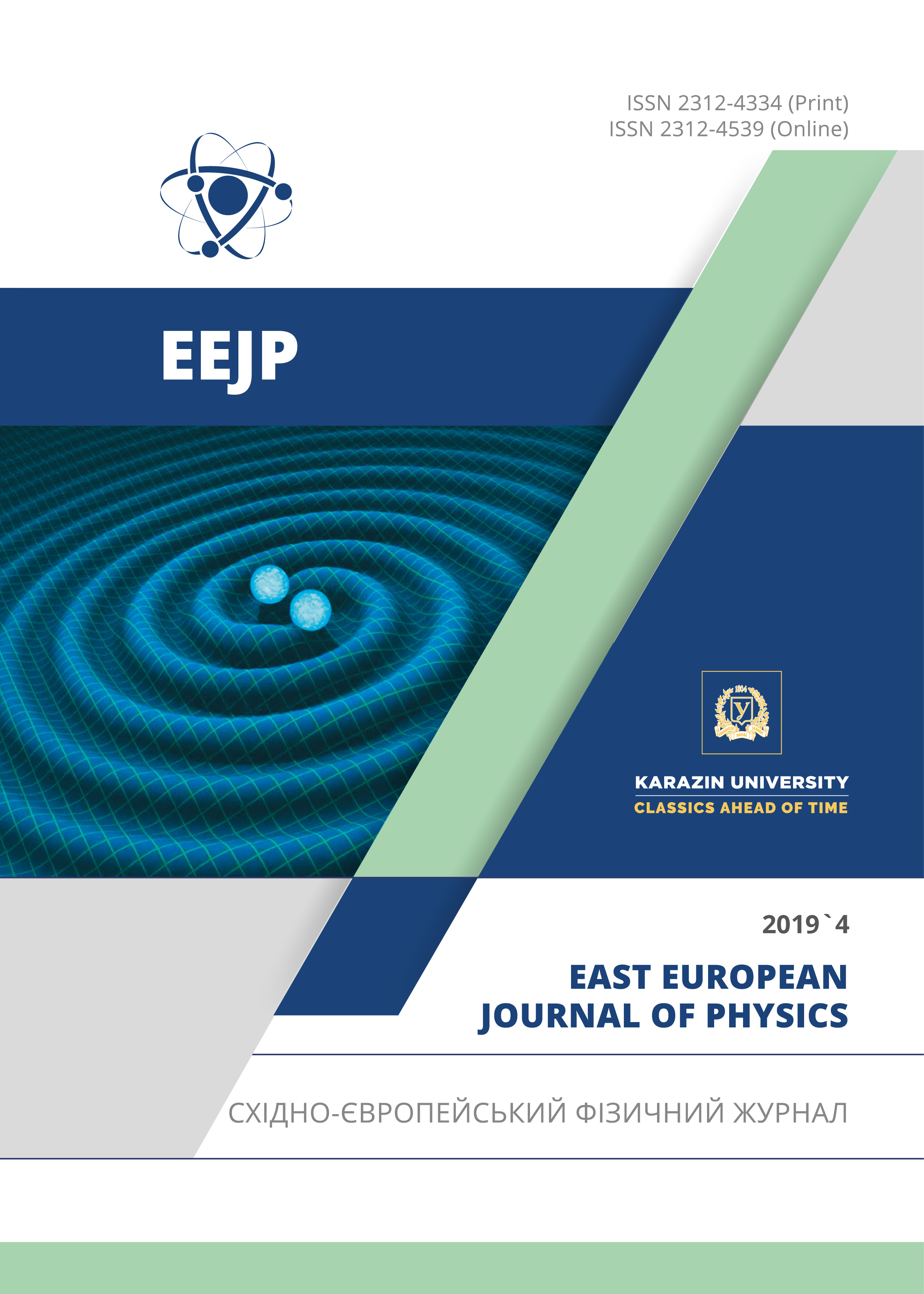До питання про частоту і просторову періодичність появи хвиль аномальної амплітуди в океані
Анотація
В роботі показано, що хвилі аномальної амплітуди є довгоживучими утвореннями. Вони дрейфують в напрямку хвильового руху з груповою швидкістю хвильового пакета, яка вдвічі менше фазової швидкості основної хвилі. Розмах хвилі (відстань від горба до западини) аномальної амплітуди більш ніж втричі перевершує середнє значення розмахів хвильового руху. В результаті модуляційної нестійкості цієї хвилі формується спектр збуджень, енергія якого вдвічі більше енергії основної хвилі в розвиненому режимі процесу. Просторовий розмір хвильового пакета практично не змінюється, амплітуда розмаху в максимумі спочатку наростає, потім поступово зменшується. Число таких хвиль в зонах сильного вітрового впливу значно більше, ніж це дозволяє статистика випадкових інтерференційних процесів. Це обумовлено впливом основної хвилі (її амплітуда залишається помітно більше амплітуд кожної з мод хвильового пакета) на поведінку кожної пари мод з хвильового пакета обурення. У лабораторній системі тривалість виникнення аномальної хвилі якісно збігається з часом існування автоволни Перегрина. Хоча слід зазначити, що автохвиля Перегрина відповідає іншої фізичної реальності, де дисперсія хвилі слабка. Гравітаційні поверхневі хвилі мають сильну дисперсією і рівняння НУШ в цьому випадку помітно модифікується. Однак в системі спокою хвильового пакету, (яка рухаеться відносно лабораторної системи) час життя хвилі аномальної амплітуди істотно більше. Відстань, яку проходить хвильової пакет з аномальним розмахом, відповідає кільком сотням довжин хвиль і може досягати сотень кілометрів. Простий підрахунок таких хвиль засобами космічного моніторингу через невелику зону (кадр) перегляду може виявитися неточним. Одного разу з’явившись, такі хвилі здатні дрейфувати на значні відстані. При цьому вони цілком можуть потрапити в наступний кадр перегляду. Тобто оцінки числа таких мод можуть бути завищені.
Завантаження
Посилання
V.I. Karpman, Нелинейные волны в диспергирующих средах [Nonlinear waves in dispersing media] (Nauka, Moscow, 1975), pp. 175. (in Russian)
M.J. Lighthill, IMA Journal of Applied Mathematics, 1(3), 269–306 (1965), https://doi.org/10.1093/imamat/1.3.269.
E.V. Belkin. PhD-thesis (V.N. Karazin Kharkiv National University, Kharkiv, 2010), pp. 150. (in Russian)
E.V. Belkin, A.V. Kirichok A.V. and V.M. Kuklin, VANT Ser. Plasma electronics and new acceleration methods, 68(4), 291 295 (2010).
E.V. Belkin, A.V. Kirichok, V.M. Kuklin and A.V. Priymak, East Eur. J. Phys. 1(2), 4-39 (2014). (in Russian).
V.M. Chernousenko, V.M. Kuklin, I.P. Panchenko and V.M. Vorob’ev, in IV Int. Workshop on Nonlinear and Turbulent Proc. In Physics. (Singapore, World Scientific, 1990), 2, pp. 776-803.
V.M. Kuklin. Избранные главы. Теоретическая физика. [Selected Chapters. Theoretical Physics] (V.N. Karazin Kharkiv National University, Kharkiv, 2018), pp. 224. (in Russian)
A. Chabchoub, N. Hoffmann and N. Akhmediev, Physical Review Letters, 106, 204502 (2011), https://doi.org/10.1103/PhysRevLett.106.204502.
D. Peregrine. The ANZIAM Journal, 25(1), 16–43 (1983), https://doi.org/10.1017/S0334270000003891.
V.E. Zakharov, Eur. J. Mech. B Fluids. 18(3), 327–344 (1999).
A.I. Dyachenko and V.E. Zakharov, JETP Lett. 81(6), 255–259 (2005), https://doi.org/10.1134/1.1931010.
A.A. Kurkin and E.N. Pelinovsky, Волны убийцы: Факты, теория и моделирование. [Killer waves: facts, theory and modeling], (UNN, Nizhny Novgorod, 2004). (in Russian).
P. Stansell, Ocean Engineering, 32(8-9), 1015–1036 (2005), https://doi.org/10.1016/j.oceaneng.2004.10.016.
A. Chabchoub, N. Hoffmann, M. Onorato, and N. Akhmediev, Physical Review X, 2, 011015 (2012), https://doi.org/10.1103/PhysRevX.2.011015.
Автори, які публікуються у цьому журналі, погоджуються з наступними умовами:
- Автори залишають за собою право на авторство своєї роботи та передають журналу право першої публікації цієї роботи на умовах ліцензії Creative Commons Attribution License, котра дозволяє іншим особам вільно розповсюджувати опубліковану роботу з обов'язковим посиланням на авторів оригінальної роботи та першу публікацію роботи у цьому журналі.
- Автори мають право укладати самостійні додаткові угоди щодо неексклюзивного розповсюдження роботи у тому вигляді, в якому вона була опублікована цим журналом (наприклад, розміщувати роботу в електронному сховищі установи або публікувати у складі монографії), за умови збереження посилання на першу публікацію роботи у цьому журналі.
- Політика журналу дозволяє і заохочує розміщення авторами в мережі Інтернет (наприклад, у сховищах установ або на особистих веб-сайтах) рукопису роботи, як до подання цього рукопису до редакції, так і під час його редакційного опрацювання, оскільки це сприяє виникненню продуктивної наукової дискусії та позитивно позначається на оперативності та динаміці цитування опублікованої роботи (див. The Effect of Open Access).








